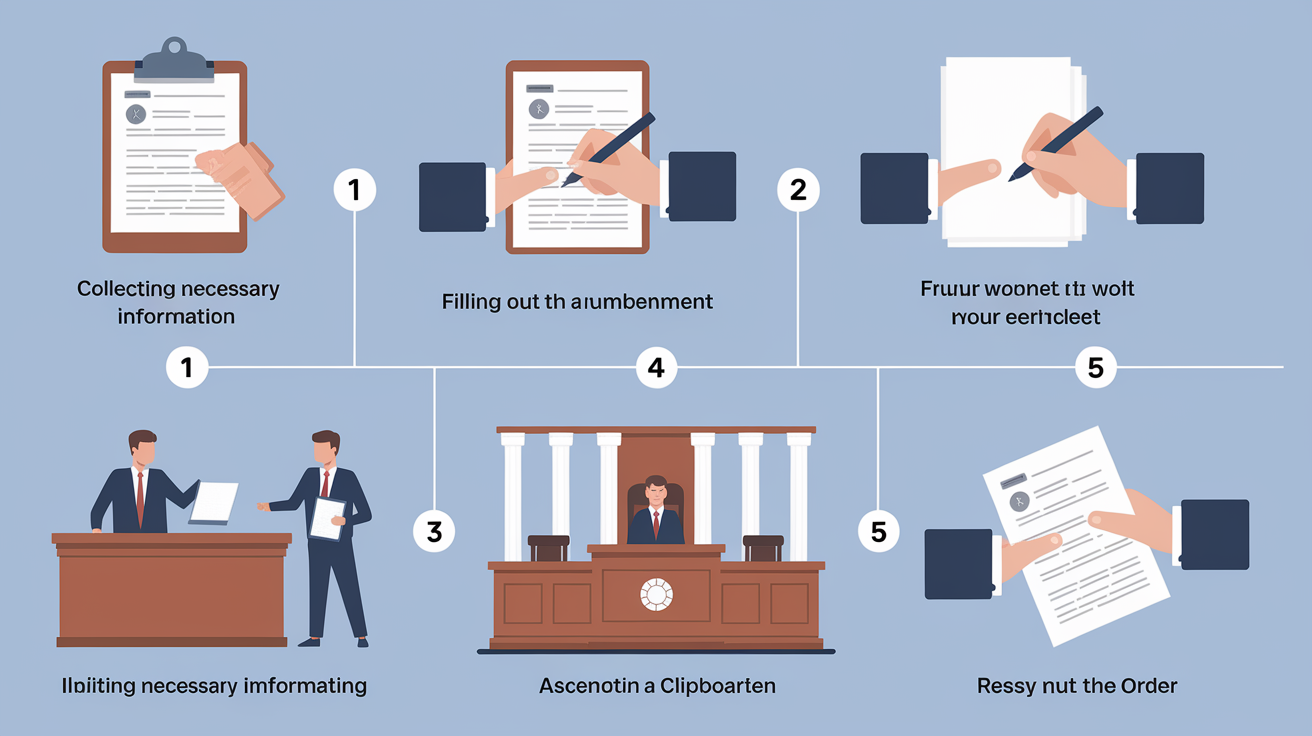Understanding Restraining Orders and Protective Orders
It can feel overwhelming. Like standing at the base of a mountain with no climbing gear, you might feel unsure about your first step. Restraining orders and protective orders are legal tools designed to give you a measure of safety and peace of mind when facing threats, harassment, or abuse.
The terms often seem interchangeable, but there are important distinctions. A restraining order tends to be broader and may appear in a variety of legal disputes, often connected to family law or property issues. A protective order is typically focused on preventing harm or harassment from a specific person, often in the context of domestic violence or personal safety concerns.

According to an overview of four common types, these orders can include:
- Domestic Violence Protection Orders – Used when the abuser is a family member or intimate partner.
- Restraining Orders – Broader in scope, can address multiple issues including property.
- No Contact Orders – Prevents all forms of communication between individuals.
- Anti-Harassment Orders – Specifically for stalking or persistent harassment behaviors.
While the end goal of each is victim protection, the paths and protections attached to them vary. You don’t need to memorize their titles—you simply need to understand what protection you require for your situation.
Initiating the Restraining Order Process
Where do you begin? The process starts with filing a petition—a formal request—for legal protection. This is usually submitted at a courthouse, either in civil or family court, depending on your circumstances.

Here’s what initiating the process generally entails:
- Identify the type of order you need based on the threat or harassment you’re facing.
- Gather evidence such as text messages, emails, photos, witness statements, or police reports.
- Visit the appropriate court to obtain and complete the petition form. Court staff can guide you on what fields to fill and where to file.
- File your petition—some states charge a filing fee, though it’s often waived for protective orders related to domestic abuse.
- Request temporary protection if you feel immediate danger. A judge may issue an Emergency Temporary Restraining Order or Temporary Restraining Order (TRO) to last until a full hearing.
In some cases, you can request the order without the other party (the “respondent”) being present. This is known as an ex parte order, and it offers an immediate but short-term remedy.
Preparing for the Court Hearing
Your hearing is the moment when the judge decides whether to grant a longer-term order. It’s natural to feel anxious—after all, you’re being asked to present your truth in a structured legal setting.
Think of this as preparing your case like a story: beginning, middle, and end. You start with what happened, explain the harm or threat, and conclude with why you need the court’s protection.

To prepare, you should:
- Organize evidence in chronological order. This makes it easier for the judge to follow your story.
- Prepare your testimony by practicing what you want to say, focusing on facts rather than emotions—although both matter.
- Bring witnesses who can truthfully recount what they saw or heard in relation to the abuse, harassment, or threats.
- Consult with an attorney or legal aid organization if possible, especially for complex or dangerous cases. It may not be required, but professional guidance can help you anticipate responses from the other side.
A question many ask is, “Do I need a lawyer to get a protective order?” The answer: you can represent yourself, but having legal counsel often increases your confidence and helps you navigate court procedures smoothly.
Enforcing and Implementing the Order
An order is only as strong as its enforcement. Once a court grants your protective order, it becomes a binding judicial order. That means violating it can lead to arrest, fines, or even jail time, regardless of whether the restrained person was convicted of a crime beforehand.
Key steps to ensuring enforcement include:
- Serve the order on the restrained party. Law enforcement or a process server delivers it; you should not do this yourself.
- Keep copies handy—one at home, one in your car, one at work or school.
- Inform local law enforcement and your employer or school administrators so they can help monitor compliance.
- Report violations immediately to police, keeping detailed notes of the incident.
Remember, protective orders often prohibit stalking, harassment, firearm possession, and presence in designated places like your home or workplace. Judges may even include special conditions such as counseling for the restrained person.
Long-Term Benefits and Next Steps
Securing a restraining or protective order is not just about the immediate relief—it’s about carving out space for safety and rebuilding trust in your own environment.
The benefits include:
- Peace of mind from legally backed boundaries.
- Clear safety measures to guide police response if violations occur.
- Support leverage in family court disputes involving custody or visitation.
Orders vary in duration; for example, in Texas, certain protective orders can last up to two years or longer under specific conditions. If your order is nearing expiration and the threat remains, you can petition the court for an extension.
Your next steps may involve ongoing safety planning: updating your family, workplace, and schools about the order’s terms, and seeking counseling or support groups to navigate the emotional weight of what you’ve experienced.
While the process may seem daunting at first, each action you take builds a path upward. With the right knowledge and resources, you can climb the mountain—gear in hand—and reach the safety you deserve.







